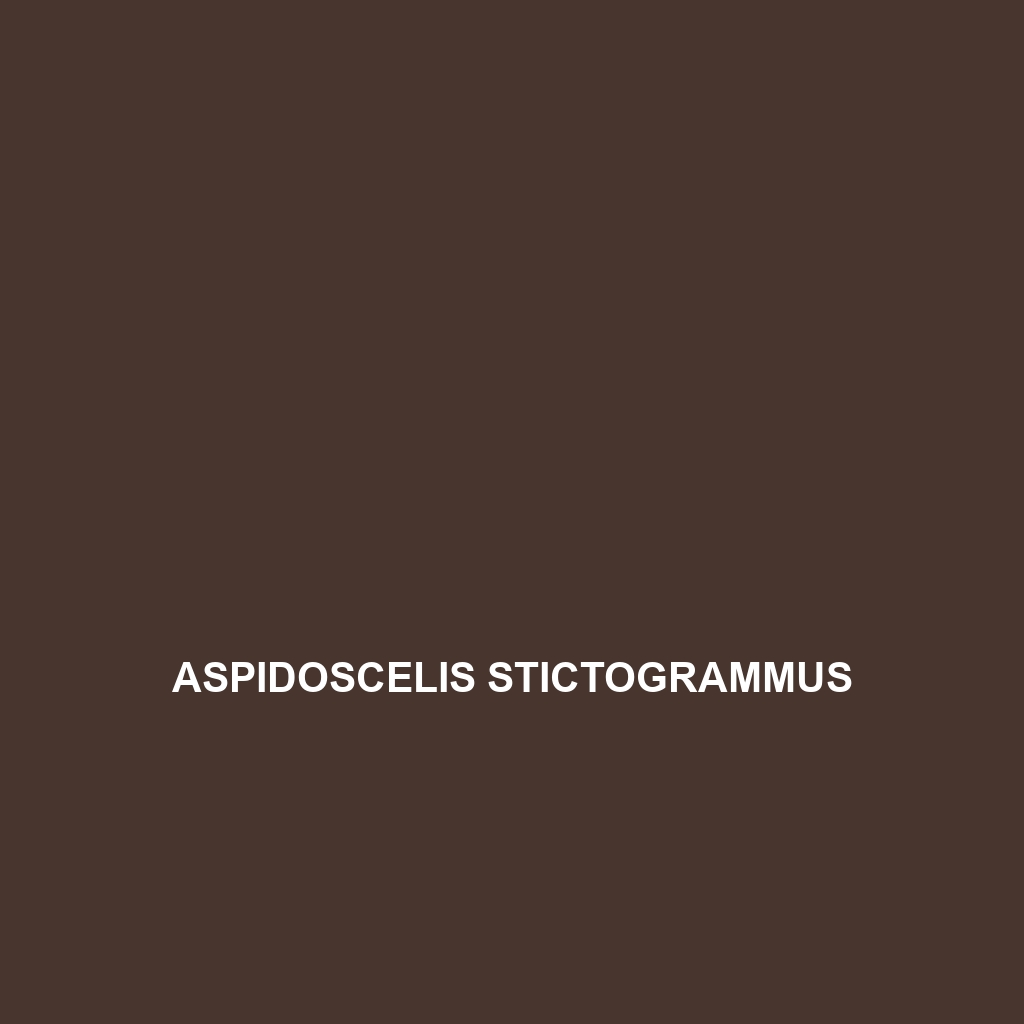Species Description: Aspidoscelis stictogrammus
Common Name: Aspidoscelis stictogrammus
Scientific Name: Aspidoscelis stictogrammus
Habitat
Aspidoscelis stictogrammus, commonly known as the patterned whiptail lizard, is primarily found in the arid and semi-arid regions of the southwestern United States, particularly in the states of Arizona and New Mexico. This species thrives in a variety of habitats including desert grasslands, scrublands, and rocky outcrops.
Physical Characteristics
This lizard typically ranges from 7 to 10 inches in total length. It exhibits distinctive coloration with a combination of olive to brownish bodies interspersed with black spots and bars which provide effective camouflage against predators. The elongated body, characterized by a slender build and a long, whip-like tail, is combined with short limbs which enhance its agility.
Behavior
The patterned whiptail lizard is diurnal, meaning it is most active during daylight hours. It is known for its quick movements, often darting between rocks and vegetation to evade predators. Aspidoscelis stictogrammus is a ground-dwelling species and is commonly observed basking in the sun, which aids in regulating its body temperature.
Diet
Aspidoscelis stictogrammus primarily feeds on a diet composed of small invertebrates including insects such as ants, beetles, and grasshoppers. This lizard plays a critical role in controlling insect populations, and its feeding habits adapt to seasonal availability of prey.
Reproduction
This species engages in a unique reproductive strategy known as parthenogenesis, where females can reproduce without the need for males. Breeding typically occurs in the warmer months, from late spring to early summer, resulting in clutches of 2 to 6 eggs. The eggs are laid in sandy or loose soil, and hatchlings emerge approximately 8 to 12 weeks later.
Conservation Status
According to the IUCN Red List, Aspidoscelis stictogrammus is currently listed as “Least Concern,” indicating that it does not face immediate threats. However, habitat loss and degradation pose potential risks that could affect future populations.
Interesting Facts
One of the most fascinating attributes of the Aspidoscelis stictogrammus is its ability to change coloration based on environmental factors. This adaptation not only serves as camouflage but also aids in thermoregulation. Furthermore, this species is known for its resilience to harsh conditions, often being one of the first to reoccupy areas following disturbances.
Role in Ecosystem
Aspidoscelis stictogrammus plays an essential role in its ecosystem as both a predator and prey. By consuming numerous insects, it helps maintain ecological balance, while it also serves as a food source for various birds and mammals. The interactions within its habitat underscore its importance in the food web of southwestern ecosystems.
